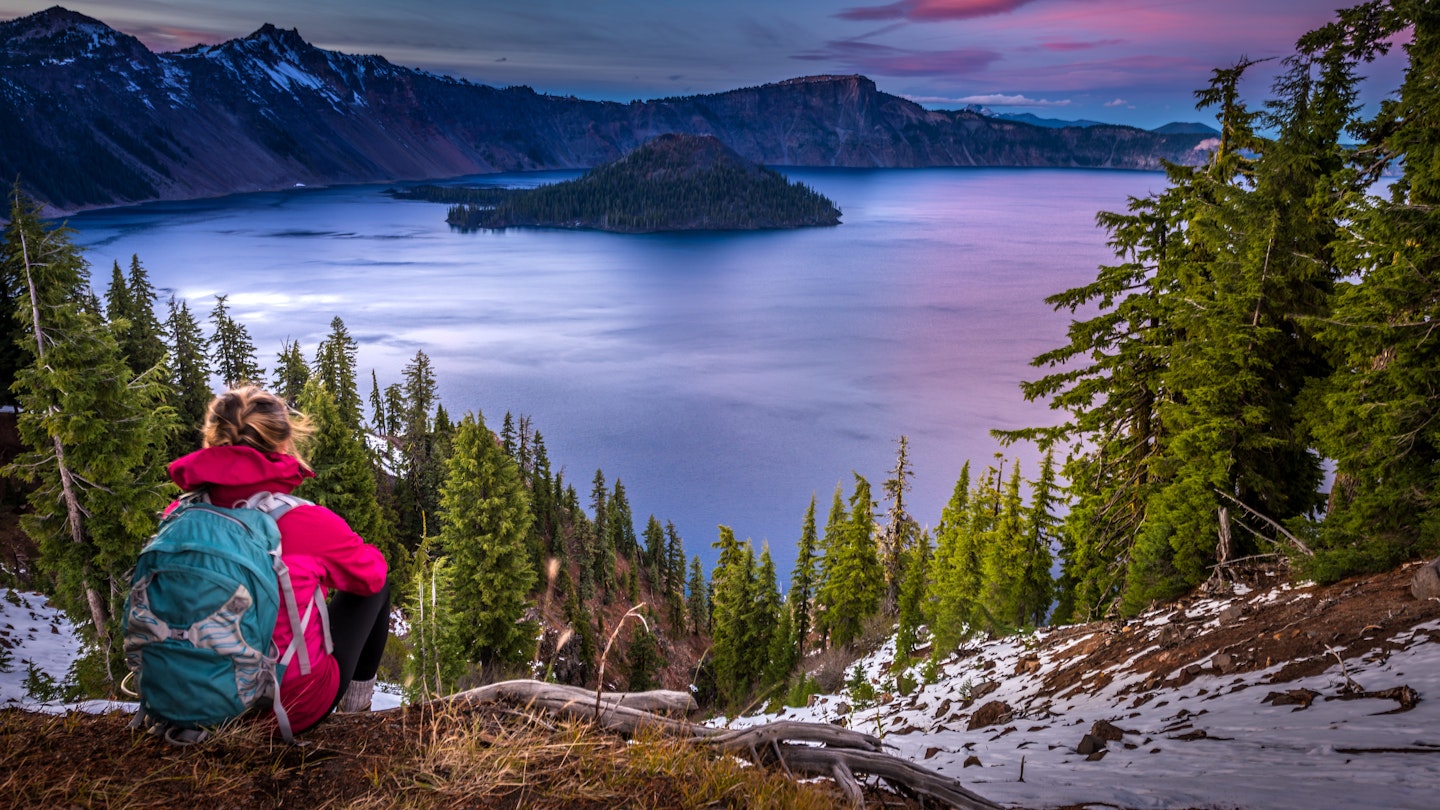Crater Lake National Park: A Guide to Oregon’s Natural Wonder
As a state that receives nearly 40 inches (102 cm) of rain per year, much is made about Oregon’s famous lakes and rivers. However, tucked away in the south, some 90 minutes north of the border with California, one body of water rules them all—Crater Lake. This caldera on Mt. Mazama is the deepest lake in the US and lends its name to the state’s only national park.
Beyond the jaw-dropping statistics, Crater Lake National Park offers premium access to an array of outdoor activities, including camping, glamping, cycling, swimming, and more. Therefore, whether you’re looking for a scenic weekend getaway, an epic biking adventure, or a relaxing boat tour, Crater Lake is a premier destination. Here’s everything you need to know.
History of Crater Lake National Park
Crater Lake checks out as Oregon’s best national park. While it’s unique in being the only national park in the state, it remains relatively obscure compared with West Coast giants like Yosemite, Olympic, Glacier, and Yellowstone. Nonetheless, it is the fifth oldest national park in the US.
Established in 1902 by William Gladstone Steel, a journalist and mountaineer who campaigned for 17 years for it to be designated as a national park, the eponymous lake is actually a caldera, formed some 7700 years ago when the volcano Mt. Mazama erupted and caved in on itself.
Reliant on snowmelt and rainwater to fill the basin, it took nearly 800 years for Crater Lake to reach capacity, but the results are utterly spectacular: The lake’s glacier-clear, berry-blue waters swoop out from its solitary island reminiscent of the train of a wedding dress. With a depth of 1943 ft (592 m), it’s the deepest lake in the US and the ninth deepest in the world.
Camping at Crater Lake
There are two campgrounds within the park itself, both only open during the peak season (typically May-September/early October) as Crater Lake receives nearly 43 ft (13.1 m) of snow per year.
Mazama Campground
South of the lake, Mazama Campground is a breathtaking 6000 ft (1829 m) high site with 214 pitches. Each pitch includes a fire ring, picnic table, and access to restrooms and showers. The campsite enjoys beautiful summer weather with highs of 65-75 °F (18-24 °C) and cool, clear nights perfect for stargazing.
Lost Creek Campground
This remote, tent-only campground features just 16 pitches for adventurers. Located about 12 miles (19 km) from the park headquarters, Lost Creek remains closed until the snow has melted and debris has been cleared from the access road, usually around July.
Other Accommodation Options at Crater Lake
Perched on the rim of the caldera, Crater Lake Lodge offers stunning views. This 71-room lodge features a luxurious restaurant serving fresh cuisine and boasts breathtaking vistas of the lake and surrounding wilderness. Although built in 1915, the rooms have been remodeled to preserve its iconic fireplace and cabin aesthetic.
Hiking at Crater Lake
Crater Lake National Park boasts over 90 miles (145 km) of hiking trails, varying in length and accessibility. For those seeking a challenge, the five-mile (8 km) round trip to the summit of Garfield Peak delivers panoramic views that are hard to beat.
For a gentler experience, the Castle Crest Wildflower Garden Trail provides a 0.4 mile (0.6 km) walk from the Steel Visitors Center, showcasing a wide array of flora.
Cycling at Crater Lake
With elevations just below 8000 ft (2438 m) and frequent hills, the 33-mile-long (53 km) rim road is best suited for advanced cyclists. The rewards include crisp mountain air, pristine wilderness, and awe-inspiring angles of the lake, along with multiple opportunities for photos and hydration breaks.
For an easier, traffic-free ride, Grayback Drive offers eight miles (12.8 km) of vehicle-free, unpaved terrain that is perfect for casual enthusiasts.
Family Activities at Crater Lake
There’s plenty to keep families entertained at Crater Lake National Park. The visitor center serves as a great starting point, featuring interactive exhibits about the lake’s captivating history and formation.
National Park Rangers lead boat cruises on Crater Lake, providing valuable insights into the caldera’s formation. Tours prioritize water purity and take place on low-emission vessels. Some tours extend to Wizard Island, a volcanic cinder cone where visitors can hike, swim, and fish.
Other family-friendly activities include trolley rides through the park, horse riding in warmer months, and thrilling snowmobile trips during winter.
Can I Swim in Crater Lake?
Yes, swimming in Crater Lake is allowed. If you’re eager to take a dip, hike along the Cleetwood Cove Trail, which provides access from Rim Drive to the shoreline. You can swim out straight from the shore, or take a boat ride to Wizard Island to plunge into the lake from its rocky shores.
Be aware that most of the water comes from snowmelt, and even in summer, the surface temperature averages just 57 °F (14 °C). It’s recommended to bring a towel and dry clothes.




